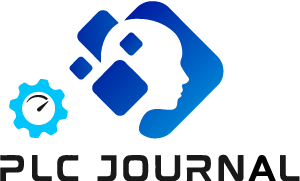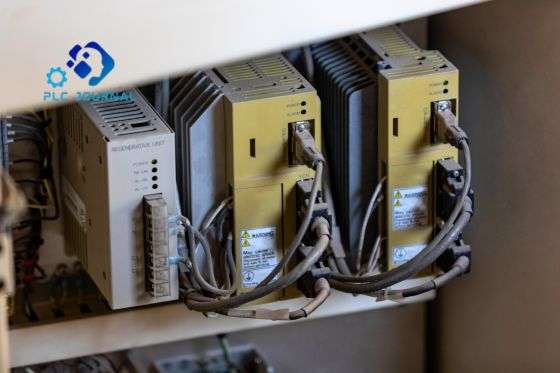Introduction
In the realm of automation and precision control, servo drives undoubtedly play a pivotal role. These compact yet powerful devices are, in fact, at the heart of many modern machines and systems, providing not only precise but also dynamic control over electric motors. Moreover, in this comprehensive exploration, we will delve into the fundamentals of servo drives, examine their inner workings, explore the various types of servo motors, highlight the reasons for their widespread adoption, and finally discuss the numerous advantages they offer in diverse applications.
What Is a Servo Drive?
A Servo Drive, often referred to simply as a servo controller, is a specialized electronic device designed to precisely control the motion of electric motors, particularly servo motors. It serves as the intermediary between the control system or operator and the motor, effectively translating commands into precise movements. Moreover, servo drives are well known for their exceptional accuracy, impressive speed, and consistent ability to maintain specific positions. Consequently, these qualities make them indispensable in applications that not only demand precision but also require a high level of reliability.
How Does It Work?
The operation of a servo drive involves several key components and processes:
- Control Input: First of all, the servo drive receives control signals from the system or operator. These signals, in turn, clearly specify the desired position, speed, and torque for the motor. Moreover, this initial step ensures that the motor operates according to precise requirements.
- Feedback System: A critical element in servo drive operation is feedback. This can be achieved through various devices such as encoders or resolvers, which continuously provide information about the motor’s actual position and speed.
- Comparison: In this stage, the servo drive continuously compares the desired motor performance, as specified in the control signals, with the real-time feedback data. Moreover, this ongoing comparison allows the system to detect any deviations instantly. As a result, it ensures that the motor remains aligned with the intended performance parameters.
- Error Signal: Consequently, any discrepancy between the desired and actual performance immediately generates an error signal. Moreover, this signal is then used to automatically adjust the motor’s operation. As a result, the system can continuously correct deviations and maintain precise performance.
- Amplification and Control: Subsequently, the servo drive amplifies the error signal and then generates a control signal that precisely modulates the motor’s power supply. In addition, this process ensures that the motor moves in a manner that effectively minimizes the error, thereby bringing it closer to the desired performance. Furthermore, continuous monitoring and adjustment help maintain consistent accuracy throughout operation.
- Closed-Loop Control: In fact, servo drives operate within a closed-loop control system, which means they continuously monitor and adjust the motor’s performance based on feedback. Moreover, this constant monitoring allows them to maintain precise control over position, speed, and torque. Consequently, the system can respond dynamically to any changes or disturbances, ensuring optimal performance at all times.
Types Of Servo Motors
Servo drives are compatible with various types of servo motors, each suited to specific applications. Some common types include:
- Brushless DC Servo Motors: These motors offer high efficiency, reliability, and precise control. They are commonly used in robotics, CNC machinery, and automation systems.
- AC Servo Motors: AC servo motors provide excellent performance in terms of speed and torque control. They are suitable for applications requiring high acceleration and deceleration rates.
- Linear Servo Motors: Linear servo motors offer linear motion instead of rotational motion. They find use in applications like precision positioning and high-speed automation.
Why You Should Use A Servo Drive?
The utilization of servo drives offers several compelling reasons, including:
- Precision Control: Indeed, servo drives excel at the precise control of motor performance, thereby ensuring accurate positioning, consistent speed, and reliable torque. Moreover, this high level of control allows for enhanced efficiency and repeatability in various applications. In addition, it makes servo drives particularly suitable for tasks that demand meticulous accuracy.
- Speed and Efficiency: They enable rapid acceleration and deceleration, enhancing operational speed and efficiency.
- Dynamic Response: Servo drives can quickly respond to changing load conditions and adjust motor performance accordingly.
- Reduced Heat Generation: Efficient operation results in lower heat generation, contributing to extended motor and drive lifespan.
- Energy Savings: Precise control and reduced heat generation lead to energy savings, making servo drives a cost-effective choice.
What Is Servo Motor Driver Used For?
A Servo Motor Driver, also known as a servo amplifier or servo controller, is used to precisely control the motion of a servo motor. It takes the control signals from the system or operator and translates them into the necessary power and voltage adjustments for the motor. Servo motor drivers work in tandem with servo drives to achieve accurate and dynamic control over motor performance.
What Is the Difference Between Servo Drive and Driver?
The terms “Servo Drive” and “Servo Driver” are often used interchangeably, but they refer to different components in the control system:
- Servo Drive: This device translates control signals into precise motor adjustments, ensuring accurate performance.
- Servo Driver: Also known as a servo amplifier or controller, this component amplifies control signals and provides power adjustments to the motor through the servo drive.
Together, the servo drive and servo driver form a closed-loop control system for the servo motor.
What Are the Advantages of Servo Drive?
Servo drives offer several distinct advantages in various applications:
- Precision: Servo drives provide unparalleled precision in controlling motor performance, making them ideal for tasks demanding accurate positioning and motion control.
- Speed and Responsiveness: They can quickly adapt to changing load conditions and adjust motor speed and torque accordingly, ensuring efficient and responsive operation.
- Energy Efficiency: Servo drives maximize energy efficiency by delivering only the required power to the motor, minimizing waste and reducing operating costs.
- Reduced Maintenance: Precise control and efficient operation result in reduced wear and tear on motors and machinery, leading to extended equipment life and reduced maintenance requirements.
- Versatility: Servo drives are versatile and compatible with various types of servo motors, making them suitable for a wide range of applications.
Conclusion
In conclusion, Servo Drives and their companion Servo Motors are indispensable components in industries where precision and dynamic control are paramount. Their ability to provide precise positioning, speed, and torque control makes them invaluable in applications such as robotics, CNC machinery, and automation systems.
Understanding their inner workings, types, and advantages is crucial for harnessing their full potential in various industrial and commercial applications. Servo drives and motors have revolutionized the world of motion control. Enabling us to achieve levels of precision and efficiency that were once considered unattainable.
Frequently Asked Questions: What Is a Servo drive and How Does it Work?
The operational lifespan of a servo largely depends on its quality, usage, and maintenance. High-quality servos can run for thousands of hours, while continuous operation without proper maintenance can reduce their lifespan.
Servo failure can result from various factors, including overloading, overheating, electrical issues, mechanical wear, or insufficient maintenance.
The maximum voltage for a servo varies depending on its specifications and design. Common servo voltages include 4.8V, 6V, and 7.4V, but higher-voltage servos are also available for specific applications.
Servos are designed to operate within a specific voltage range, typically indicated in their datasheets. Common servo voltage ranges include 4.8V to 7.4V. It’s essential to use the correct voltage to prevent damage.
The “range” of a servo typically refers to its rotational capability, often measured in degrees. Servos can have different ranges, such as 90 degrees. 180 degrees, or continuous rotation, depending on their intended use and design.
Technical Guides
What Is a Programmable Logic Controller (PLC)? Full Explanation
What is HMI? Human-Machine Interface (HMI)-Full Explanation
What is a Variable Frequency Drive?-It’s complete guidelines
What Is a Servo drive and How Does it Work? It’s complete guidelines
Manual PDF
[PDF] Delta PLC DVP-ES2/EX2/SS2/SA2/SX2/SE&TP Operation Manual Free Download
Delta HMI-DOPSoft User Manual Free Download [PDF]
Cable Making
[DIY-Cable] PLC/HMI-Panasonic Connecting PC
[DIY-Cable] PLC/HMI-Keyence Connecting PC
[DIY-Cable] S7-200 Siemens Connecting PC
[DIY-Cable] Mitsubishi PLC Programming Cable SC-09 for FX-Series
[DIY-Cable] PLC Delta Programming Cable DVPACAB230
[DIY-Cable] PLC OMRON Programing Cable for CJ/CS/CQ-Series
[DIY-Cable] PLC “LS/LG” Programing Cable
[DIY-Cable] PLC “Fatek/Facon” Programing Cable
[DIY-Cable] PLC “Vigor” Programing Cable
[DIY-Cable] HMI “Fuji/Hakko” Programing Cable
[DIY-Cable] “HMI Omron NT-Series” Programing Cable
[DIY-Cable] HMI Keyence “VT3-W4 Series” Cable Connecting To PLC
[PDF] HMI-Weintek Connection PLC Guide






